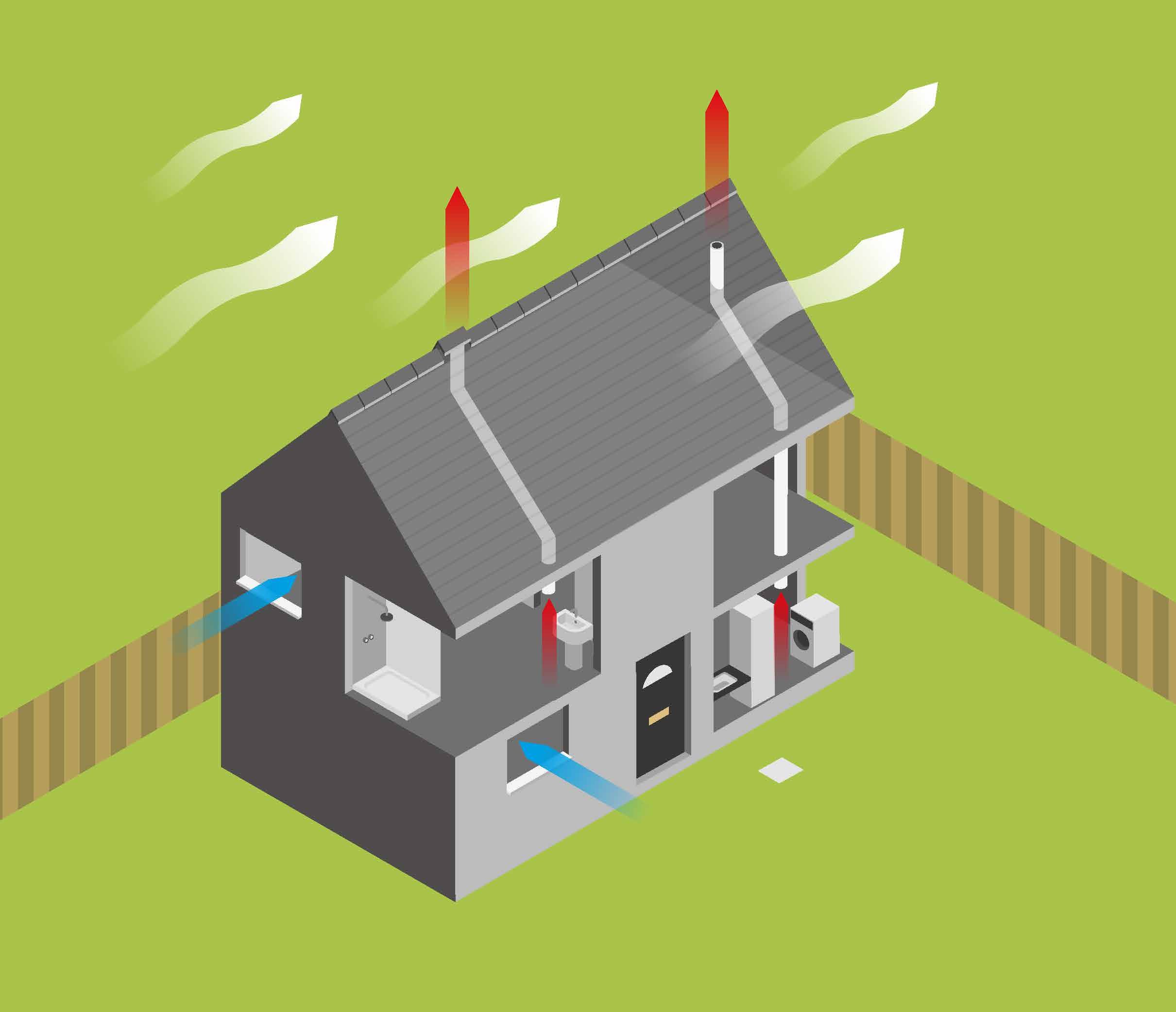Of all the natural energy systems, passive stack ventilation is arguably the most effective. But is it for everyone?
When it comes to sourcing your home energy in the most efficient, cost effective and natural way, the options can feel never ending. Deciding on the system that best suits you holds many layers; but we’re here to unpick some of them.
One of these options is passive stack ventilation (PSV): a totally natural ventilation system.
PSV harnesses natural forces – such as wind passing over terminals, cross ventilation and warm air rising – to circulate air to and from an indoor space.
It brings fresh air into a building (through vents) and shoots stale air out. This saves the need for mechanically controlled energy, keeping costs down and securing the green seal of approval.
Passive stack ventilation works in three ways.
There are three core ways PSV works as an energy source for a building.
1. Wind-driven ventilation
This is made possible by different pressures formed by winds circulating a building.
2. Buoyancy-driven ventilation
This is created by forces formed from the difference in temperature between an interior and exterior of a building
3. Night cooling
Collected heat from a building’s exposed thermal mass during daylight is released into the indoor air at night.
It’s a versatile system that ticks so many boxes, making it a popular choice with new builds.
There’s a lot to like about passive stack ventilation systems.
By eliminating the need for electric fans or internal controls, PSV systems are seriously energy efficient. They are also:
- Low maintenance – in fact, their ongoing maintenance is entirely minimal, and they are very easy to use for the long term
- Money saving – PSV relies on natural forces, significantly reducing the strain of costly energy bills
- Cleaner – a PSV system keeps the air clean that is flowing through your building. This improved air quality will immediately benefit the health of the building’s occupants
- Consistent – it balances cool and warm air, keeping temperatures level year round
So… what’s wrong with it?
While there’s nothing fundamentally wrong with passive stack ventilation, it isn’t for everyone.
There’s very little control when it comes to PSV systems, and the amount of ventilation they provide largely depends on the degree of movement within the external air and external air temperature.
The performance of a PSV can also differ enormously as it relies on natural forces; land yourself a cloudy, windless day and you’re going to experience fairly low levels of effectiveness.
Plus, as passive stack ventilation doesn’t make use of any motors to direct the air, it requires large ducts, most of which should be as close to vertical as possible. This can cause issues with house designs.
However; it isn’t impossible. With careful design, a PSV can make an excellent addition to a new build or during a major refurbishment. Occupants will enjoy a better indoor climate and considerably reduced energy consumption.
Which, to us, is a pretty good result.




















